Introduction
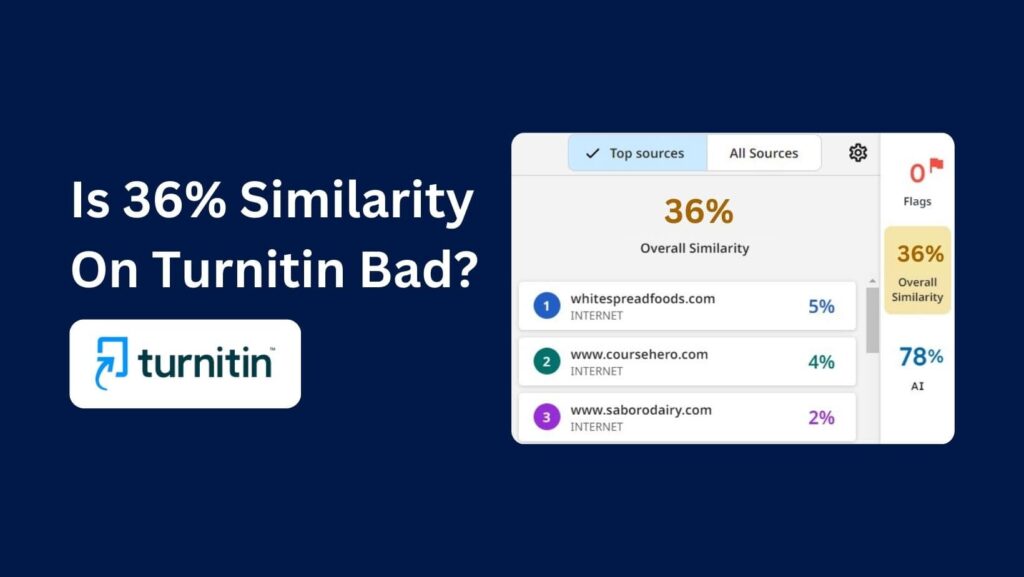
Imagine you’ve just finished pouring your heart and soul into a research paper, hitting that submit button with pride.
But then, dread creeps in as you see the words “Turnitin Similarity Report” staring back.
You click it open, heart pounding, and see a glaring red number: 36% similarity.
Panic sets in. “Is 36% similarity on Turnitin bad?”
This is the question that plagues countless students every semester.
But before you hit meltdown mode, take a deep breath and let’s break down what that number actually means.
Because trust me, a high Turnitin score doesn’t necessarily mean you’re in plagiarism trouble.
What Is Turnitin?
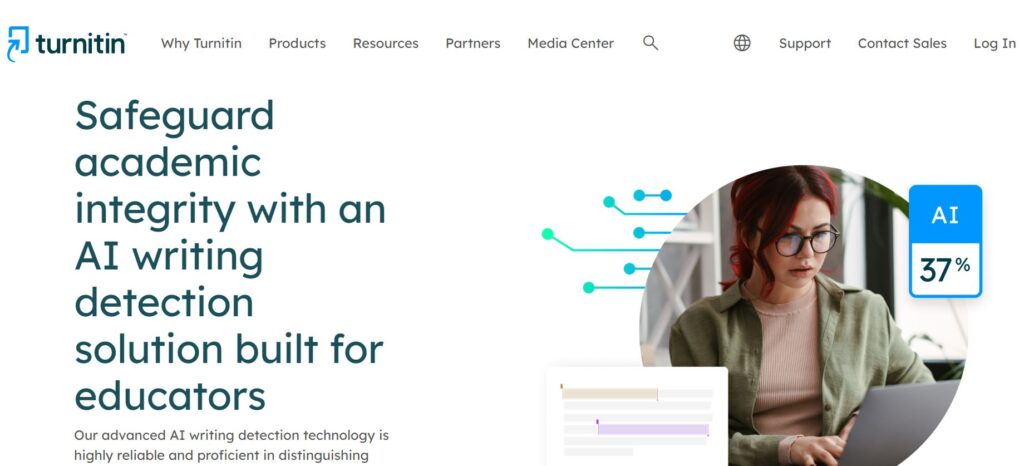
What exactly is this Turnitin thing that’s got you freaking out?
It is a sophisticated online checker, way more powerful than your average spellchecker.
Schools use Turnitin to catch plagiarism, which is basically copying someone else’s work and trying to pass it off as your own.
It’s like using your friend’s cool science fair project idea without giving them credit – not cool, right?
Here’s how Turnitin works: it scans your paper against a giant database of stuff, including websites, articles, and even other students’ work from around the globe.
If it finds big chunks of text that match something else out there, it flags those sections and gives you a similarity score, that percentage you see staring back at you.
So, the higher the score, the more your paper seems to match something else in Turnitin’s database.
Understanding Turnitin Similarity Score
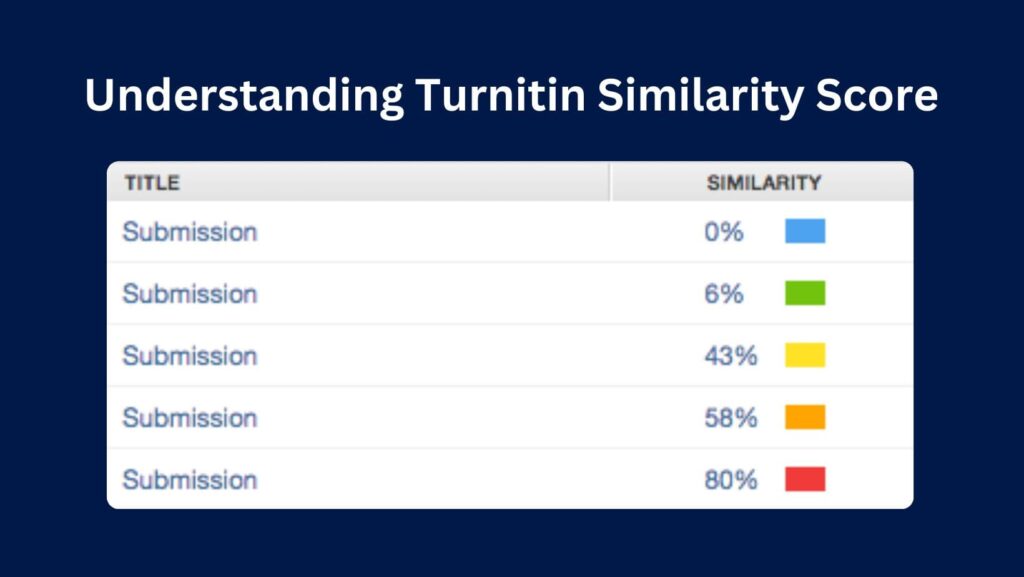
Before discussing the actual question “Is 36% Similarity On Turnitin Bad?” let’s understand the Turnitin similarity score first.
Now, that score we just talked about – the one that might be making you sweat – it’s important to understand it doesn’t tell the whole story.
Here’s the thing: a high score doesn’t always mean automatic or auto-plagiarism.
Think of it like this – when you’re writing a paper about the history of the internet.
Obviously, you’re going to use some common phrases or terms everyone knows, right?
Stuff like “World Wide Web”, “email”, or maybe a famous quotation about internet.
Turnitin might flag those as matches because they’re, well, common knowledge.
That’s why the score itself isn’t the only thing that matters.
You need to take a closer look at the report itself to see what exactly Turnitin flagged and why.
We’ll break down how to do that in a bit, but for now, just remember – the score is a starting point, not a final judgment.
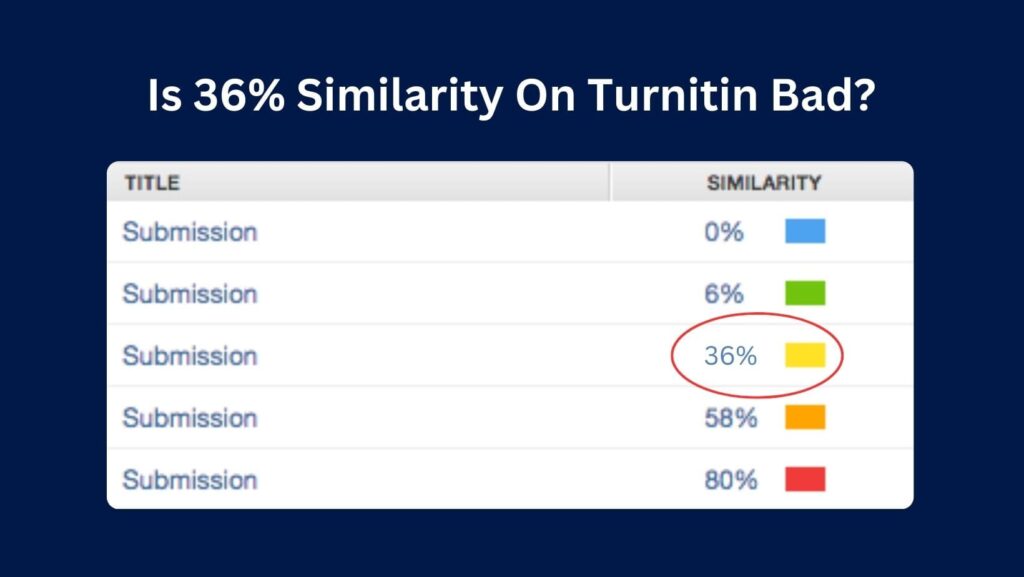
Is 36% Similarity On Turnitin Bad?
If Turnitin shows a 36% similarity score, it means more than a third of your paper matches with other existing content out there.
From a teacher’s perspective, it’s actually bad because it suggests a significant portion of your work might not be original.
They generally prefer to see lower similarity scores, indicating that you’ve put in the effort to create something unique and genuinely yours.
So, in short, a 36% similarity score on Turnitin is often seen as a red flag to teachers.
But the real truth is, it depends. Here’s why:
1. It's All Relative:
That percentage is just a number, and its meaning can vary depending on a few things.
For example, if you’re writing about a super specific scientific topic with complex terminology, a 36% score might be a cause for concern.
But if you’re writing a general history essay, it might be less worrisome.
2. Focus on Quality, Not Just Numbers:
The real key isn’t getting the absolute lowest score possible, it’s making sure you’ve properly cited your sources and avoided plagiarism altogether.
Even if your score is a bit high, a well-written paper with clear citations will be much better off than a score of zero with copied content.
3. The Report Tells the Story:
Don’t just focus on the big red number.
The Turnitin report itself will show you exactly what parts of your paper match something else.
This is where you can see if it’s just common phrases or something more serious.
The Verict: A 36% similarity score on Turnitin doesn’t automatically mean you’re in trouble. It just means you need to take a closer look at the report and make sure you’ve properly credited your sources and avoided any serious plagiarism. We’ll break down how to do that in the next section!
When Is 36% Similarity On Turnitin Bad?
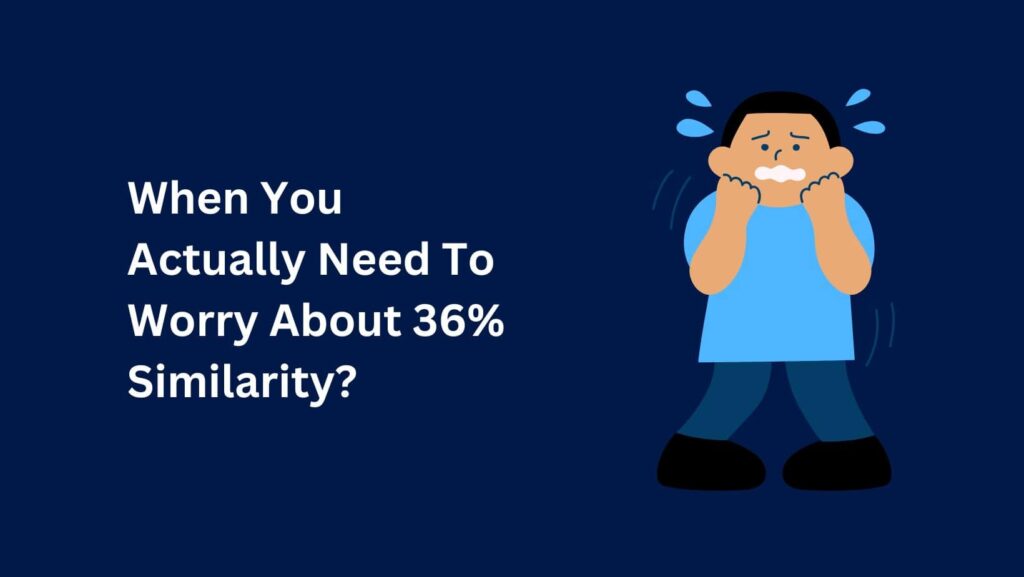
To get more clarification for this problem we have to understand our Turnitin report.
It will give you the nitty gritty details and tell you when is 36% similarity on Turnitin bad?
- Big Chunks of Matching Text: If the Turnitin report highlights large sections of your paper with 36% similarity, that’s a cause for concern. This could indicate you’ve copied heavily from a source without proper citation.
- Lack of Citations: Even if the matching text seems like paraphrasing, make sure you’ve properly cited your sources throughout your paper. The 36% similarity score with missing citations suggests you might be relying too much on other people’s work without giving them credit.
- Suspicious Sources: If the Turnitin report shows matches from unreliable or irrelevant sources, that’s a problem. Your paper should be based on credible academic sources, not random websites or blogs.
What Is a Good Turnitin Similarity Score?
There’s no magic “good” score that applies universally.
It depends on your topic, citation style, and instructor’s expectations.
However, generally aiming for a similarity score below 25% is a good target.
This indicates you’ve properly cited your sources and your writing reflects your own analysis and ideas.
How To Reduce Similarity On Turnitin From 36%?
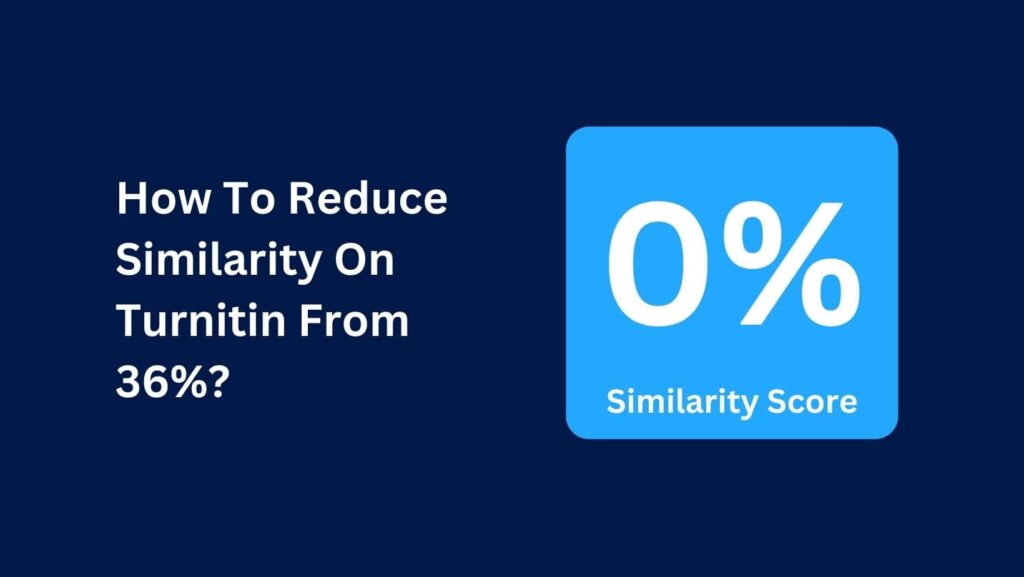
1. Become a Paraphrase Master:
This might sound scary, but trust me, it’s a skill you can develop. Paraphrasing basically means putting someone else’s ideas into your own words. Here’s the drill:
Identify the Matches: First things first, take a deep dive into your Turnitin report. See which sections are flagged for high similarity.
Read and Understand: Before you start rewriting, make sure you fully grasp the original source material.
Swap It Up: Now comes the fun part! Rewrite those flagged sections using your own words and sentence structure. Think synonyms, sentence variations, and even changing the order of ideas.
2. Citation Champs:
Citations are your best friends when it comes to reducing your Turnitin score. Here’s how to make them work for you:
In-text Citations: Whenever you use information or ideas from another source, even if you paraphrase, you need to include an in-text citation. This tells your reader where you got that information from.
Reference List: Don’t forget the reference list at the end of your paper. This is where you provide complete information about all the sources you cited in your work.
Pro Tip: There are different citation styles, like APA, MLA, and Chicago. Make sure you follow the style guide required by your instructor for consistent and accurate citations.
3. Avoid Unintentional Plagiarism:
Sometimes, plagiarism happens by accident. Here’s how to steer clear of those pitfalls:
Don’t Over-rely on Sources: While research is important, your paper should showcase your own analysis and critical thinking. Don’t just string together quotes from other sources.
Paraphrase Wisely: Paraphrasing isn’t just about changing a few words. Make sure you truly understand the source material and then rephrase it in your own way.
Develop Your Own Voice: The best way to avoid plagiarism and reduce your similarity score from 36% is to write in your own voice. Use your own words and ideas to explain your understanding of the topic.
4. Turnitin Exclusions (if applicable):
Now, this one depends on your instructor’s settings, but some Turnitin reports allow you to exclude certain sections from the similarity score.
For example, you might be able to exclude your reference list or a self-citation from another paper you wrote.
Check with your instructor or the Turnitin settings to see if this option is available.
Remember, reducing your Turnitin score isn’t just about getting a lower number.
It’s about ensuring your paper reflects your own original work and demonstrates a strong understanding of the topic.
By following these tips and focusing on proper citation and clear writing, you can turn that 36% frown upside down and submit a paper you can be proud of!
Conclusion
So, to wrap things up, let’s address the burning question: “Is 36% similarity on Turnitin bad?”
Well, here’s the scoop: while seeing that number might make you sweat a bit, it’s not the end of the world.
What really matters is understanding what that score means and taking steps to improve it if needed.
Remember, Turnitin is just a tool to help you ensure your work is original and properly cited.
So, if you find yourself with a 36% similarity score, don’t panic! Take a closer look at your Turnitin report, focus on proper citation, and put your own spin on things.
With a little effort and attention to detail, you can turn that similarity score around and submit a paper you can be proud of.
FAQs
Q1. Is 36% Similarity On Turnitin Bad?
Not necessarily, but it indicates a significant portion of your work matches other sources, which could be a concern for teachers.
Q2. What Does Score Less Than 36% Indicates in Turnitin?
A score lower than 36% suggests a lower level of similarity with existing sources, indicating originality and proper citation in your work.
Q3. What Does The Score Greater Than 36% Indicates In Turnitin?
A score higher than 36% signifies a substantial portion of your work aligns with other sources, potentially raising concerns about plagiarism and lack of originality.
Q4. How Can I Improve My Turnitin Similarity Score?
You can improve your Turnitin score by ensuring proper citation, paraphrasing effectively, and developing your own voice in your writing.
Q5. Are There Any Exceptions Where Turnitin Scores Might Be Misleading?
Yes, Turnitin scores can be misleading if they don’t consider common phrases or if they include self-citations or references, which might inflate the similarity score.

